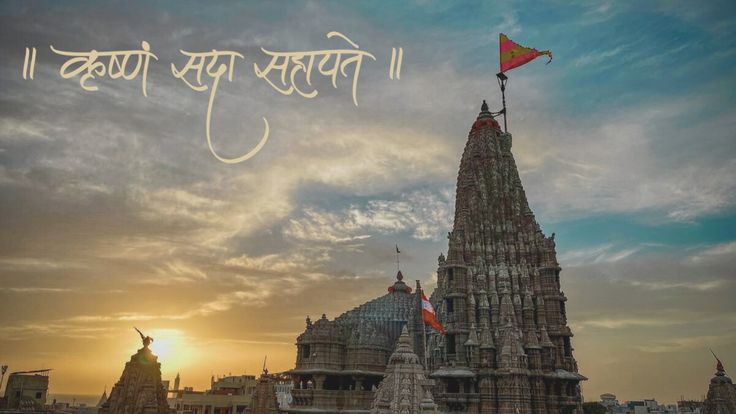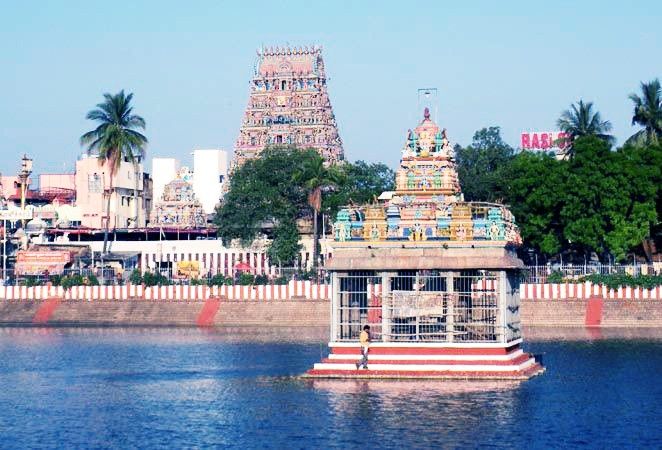All About the Char Dham Temples of India
Char Dham are the four places in India with high pilgrimage importance. These four places are namely Rameshwaram, Jaganath-Puri, Badrinath and Dwarka. Adi Shankaracharya defined the term Char Dham as the three Vaishnavite, than one Shaivite and the last a state of mixed ones. It is some of the most holy places that a Hindu should visit, at least once in a lifetime. The origin of these four temples here is still not well known and has remained to be a mysterious fact. Shankaracharya is said to have established the Advaita school of Hinduism, which was also accountable for the origin of the Char Dham. The four Hindu temples are lying across the four corners of India. The Badrinath temple is in the north, followed by the east temple of Jaganath Puri, the Dwarkadhish Temple located at Dwarka in the west, and Rameswaram in the south.
Badrinath Dham, Uttarakhand
Badrinath is a significant religious and pilgrimage site located in the Chamoli district of the Indian state of Uttarakhand. It is one of the four Char Dham pilgrimage destinations in India, with the other three being Kedarnath, Gangotri, and Yamunotri. Badrinath is dedicated to Lord Badrinath, a form of Lord Vishnu, and is situated in the Garhwal Himalayas at an elevation of approximately 3,133 meters (10,279 feet) above sea level.

Here are some key points about Badrinath
According to Hindu mythology, Lord Vishnu meditated at this location for thousands of years, sitting in the padmasana (lotus) posture, and that’s why the temple is called Badrinath. The temple has a black stone idol of Lord Badrinath.
The temple remains open to devotees only for a certain period each year, typically from late April or early May to early November. This period corresponds with the warmer months when the region is accessible.
Apart from its religious significance, Badrinath is also known for its stunning natural beauty. It is surrounded by the snow-capped peaks of the Himalayas, including the Neelkanth Peak.
A rock formation called Charan Paduka, located nearby, is believed to bear the footprints of Lord Vishnu.
The last Indian village on the Indo-Tibetan border, Mana Village, is located near Badrinath. It is a popular stop for tourists and pilgrims.
There are natural hot springs in the vicinity of Badrinath, where pilgrims often take a dip before visiting the temple.
Badrinath is a starting point for several treks and trails in the Himalayas, including the Valley of Flowers trek.
Badrinath is not only a place of religious significance but also a destination for nature lovers and adventure enthusiasts due to its breathtaking scenery and trekking opportunities. It holds a special place in the hearts of millions of Hindus who visit it each year to seek blessings and spiritual solace.
Dwarka, Gujarat
Dwarkadhish Temple, also known as the Dwarka Temple, is a significant Hindu temple located in the town of Dwarka in the state of Gujarat, India. There are also other shrines in this city dedicated to deities such as Devaki, Balarama, Vasudeva, Subhadra, Devaki, Satyabhama Devi, Jambavati Devi and Rukmini Devi. The word ‘Dwarka’ has derived its name from the word ‘dvar’ that means in Sanskrit doors or gate. It is one of the prominent Char Dham pilgrimage sites and holds immense religious and historical importance in Hinduism. Here are some key details about the Dwarka Temple.

Here are some key points about Dwarkadhish Temple
The Dwarka Temple is situated on the western coast of India in the town of Dwarka, which is part of the Devbhoomi Dwarka district in the state of Gujarat.
The temple is dedicated to Lord Krishna, who is worshipped here in his form as Dwarkadhish, meaning “King of Dwarka.” According to Hindu mythology, Dwarka is believed to be the place where Lord Krishna established his kingdom and lived with his people.
The temple follows a strict daily schedule of rituals and worship services, including aarti ceremonies performed multiple times a day. The temple is open to devotees for darshan (viewing of the deity) during specific hours.
Jagannath Puri, Orissa
The Jagannath Temple in Puri is one of the Char Dham pilgrimage destination for Hindus and is dedicated to Lord Jagannath, a form of Lord Krishna. The temple is known for its iconic, brightly colored spire, and it is one of the tallest temple towers in India. It is also famous for its annual Rath Yatra (chariot festival) when the deities Lord Jagannath, Lord Balabhadra, and Devi Subhadra are taken out in grand chariots for a public procession.

Here are some key points about Jagannath Temple
The Rath Yatra, also known as the Chariot Festival, is the most famous festival in Puri. It usually takes place in June or July, attracting millions of devotees from all over India and the world. During the festival, the deities are placed on elaborately decorated chariots and pulled through the streets of Puri. It is a spectacle of grandeur and devotion.
Puri is known for its beautiful beaches, particularly the Puri Beach. The long sandy coastline is a popular tourist destination and offers a serene environment for relaxation and beach activities.
The temple’s kitchen, known as the Ananda Bazaar, is one of the largest in the world and serves free meals to thousands of devotees every day. The food is known as Mahaprasad and is considered sacred.
Rameshwaram, Tamil Nadu
The last place of the Char Dham is the Rameshwaram, also spelled as Rameswaram, is a small island town located in the southern part of India, in the state of Tamil Nadu and It is situated in the Gulf of Mannar, which is a part of the larger Indian Ocean. Rameshwaram is known for its religious and cultural significance and attracts pilgrims, tourists, and history enthusiasts alike.

Here are some key points about Rameshwaram
Rameshwaram is one of the holiest places in Hinduism and is considered one of the Char Dham pilgrimage sites. It is particularly significant because it is believed to be the place where Lord Rama, a revered deity in Hinduism, is said to have built a bridge (Rama Setu or Adam’s Bridge) to Sri Lanka to rescue his wife, Sita, from the demon king Ravana. The town is home to the Ramanathaswamy Temple, one of the 12 Jyotirlinga shrines of Lord Shiva.
This temple is the most prominent landmark in Rameshwaram. It is dedicated to Lord Shiva and is known for its magnificent architecture, including a long corridor with 1,212 intricately carved pillars. Pilgrims take a ritual bath in the 22 sacred wells within the temple complex before offering prayers.
The Adam’s Bridge, also known as Rama Setu, is a chain of limestone shoals that stretch between Rameshwaram in India and Mannar Island in Sri Lanka. It is of great geological and historical interest due to its association with the Ramayana.
Apart from its religious significance, Rameshwaram offers various tourist attractions. These include the Pamban Bridge, which connects the island to the mainland and is known for its scenic views; Dhanushkodi, a ghost town believed to be the spot where Lord Rama built the bridge to Lanka; and the Gandhamadhana Parvatham, a hillock that offers panoramic views of the island.
Rameshwaram is a place of immense religious and cultural importance, drawing devotees and tourists who seek spiritual solace and a glimpse into the rich mythology and history of India.
